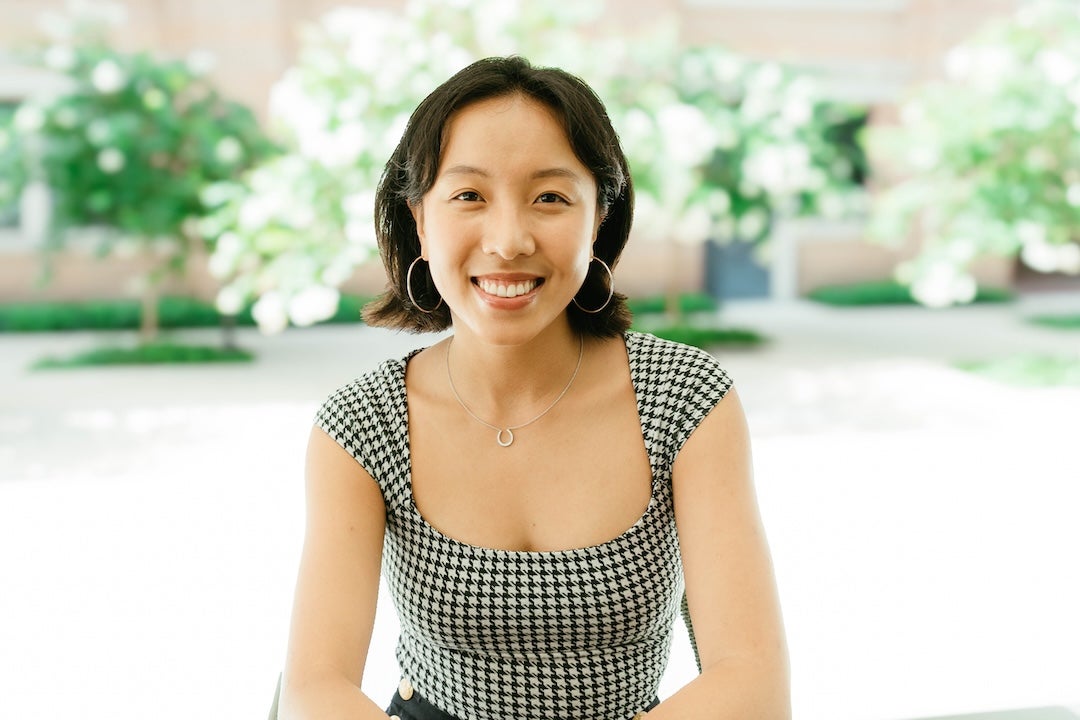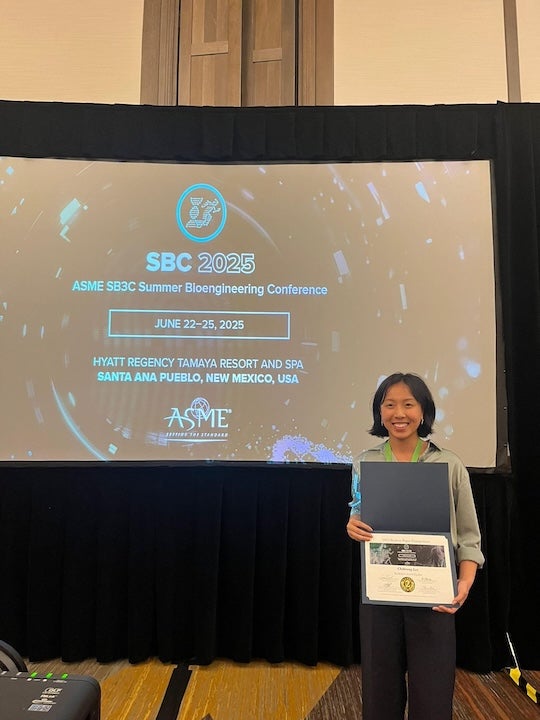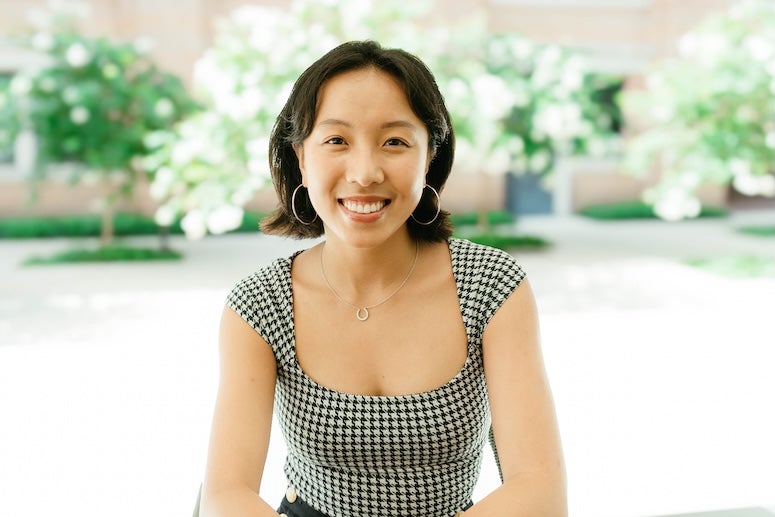
Chihtong “Lily” Lee never set out to reinvent surgical tools, but her curiosity, precision and creativity led her to do just that.
The 2025 Rice University graduate recently earned second place in the undergraduate category at the ASME SB3C Summer Bioengineering Conference, a competition hosted by the American Society of Mechanical Engineers. Selected as one of the top presentations out of more than 200 submissions, Lee was invited to attend the national conference in New Mexico, where she stood out for her work on improving surgical outcomes for patients undergoing a common spinal procedure.
Her research, titled “Investigation of Retractor Blade Geometry on Esophageal Stress and Deformation During Anterior Cervical Discectomy and Fusion,” explores how small design changes in surgical hardware could make a big difference in patient recovery.
“My undergrad degree was in civil engineering, where I developed a strong interest in computational modeling and its real-world applications, especially in water resources,” Lee said. “After taking a class in finite element analysis, however, I became fascinated by its medical applications. Being close to the Texas Medical Center made it easy to get involved, and this was the first project that really blended my modeling background with medical research.”

Anterior cervical discectomy and fusion (ACDF) is the most commonly performed cervical spine surgery in the U.S. with over 150,000 procedures each year. While the surgery is often successful in relieving nerve compression and restoring spinal stability, it carries a high risk of postoperative dysphagia, which is defined as difficulty swallowing due to esophageal irritation or damage caused during surgery.
Lee’s work, conducted in collaboration with the Department of Neurosurgery at Baylor College of Medicine, aims to identify how retractor blade geometry contributes to tissue strain during ACDF. Retractors are used to hold the surgical site open, and their shape, material and placement can have a significant effect on surrounding tissues like the esophagus.
“This type of spinal surgery is the gold standard and widely used around the world, but patients often experience lingering pain and difficulty swallowing afterwards,” Lee said. “While not life-threatening, it affects quality of life. Most research in this area has focused on clinical outcomes, but the role of surgical hardware has been largely overlooked. This is one of the first studies to use computational modeling to examine how the geometry and material properties of the retractor can help to mitigate tissue stress and postoperative complications.”
Using computational modeling, Lee conducted a parametric study that simulated the mechanical effects of different blade geometries, coating materials and insertion depths. Her models showed that blades incorporating soft, biocompatible coatings significantly reduced stress concentrations in the esophagus. These coated blades also distributed force more evenly, which could lead to less trauma and better postsurgical outcomes.
“This project elegantly integrates engineering mechanics — combining theory, computation and experiments — to address a pressing postsurgical clinical challenge by enabling surgical hardware to conform mechanically to a patient’s anatomy and by investigating the effects of surgical retraction on soft tissues without altering the surgical procedure itself,” said Raudel Avila, assistant professor of mechanical engineering at Rice, who mentored Lee on this project.
“This was my first bioengineering conference, and it was incredible to be surrounded by so many smart, driven people doing exciting work,” Lee said. “It was inspiring to meet researchers advancing the field of nonlinear mechanics and patient-specific modeling in such innovative ways. Having my first study in this field recognized with an award was meaningful, but the best part was learning from others, seeing new techniques and thinking about how they could shape my future work and help improve patient outcomes.”
Lee’s project was supported by a Rice Engineering Alumni Grant, which allowed undergraduates studying both mechanical engineering and bioengineering to participate, including Mert Çulcu, Catherine Stidham, Ella Lopez and Komal Talloo. Though the work has not yet been published, Lee said she is hoping to prepare it for peer-reviewed submission in the coming months. She also plans to continue her research in graduate school: This fall, she’ll begin working on her doctorate in mechanical engineering at Rice, conducting research in Avila’s lab and focusing on computational biomechanics and biomedical device design.
“I’m excited to pursue interdisciplinary research at the intersection of health care and mechanics,” Lee said. “Our group focuses on developing theoretical and computational framework for the development of bioelectronic designs, and I’m interested in better understanding coupled mechanical-electromagnetic behaviors to inform more efficient device design for health applications. It’s an exciting next chapter, and I’m thrilled to be continuing it here at Rice.”

